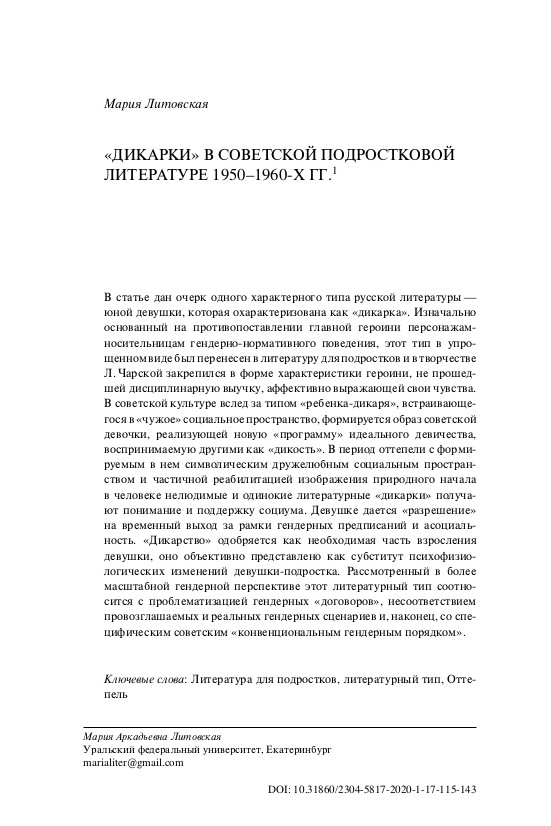Girls — “savages” in Soviet Teen Literature
DOI:
https://doi.org/10.31860/2304-5817-2020-1-17-115-143Abstract
The article gives an essay of one literary type of Russian literature — a young girl, who is described as a “savagery”. Initially based on the opposition of the main character to the characters-speakers of gender-normative behavior, this type in a simplified form was transferred to literature for teenagers and in the texts of L. Charskaya. It is established in the form of a characteristic of the girl-hero, who did not pass disciplinary training and expresses her feelings in an affective way. In Soviet culture after a popular type of “wild child” embedded in an “alien” social space, an image of a Soviet girl implementing a new “program” of a perfect maiden, perceived by others as “wild”, was realized. During the period of “thaw” with the symbolic friendly social space formed in it and the partial rehabilitation of the natural essence of man, the inhuman and lonely literary girls-“savages” receive the understanding and support of the society. The girl is given “permission” to temporarily life beyond gender regulations and asociality. “Savagery” is approved as a necessary part of a girl’s growing up, it is objectively presented as a substitute of psychophysiological changes of a teenage girl. Considered from a larger gender perspective, this literary type relates to the problem of gender “treaties”, the inconsistency of proclaimed and real gender scenarios, and finally to the specific Soviet “conventional gender order”.
Keywords: literature for young adults, literary character, Lidia Charskaya, Khrushchev’s Thaw







